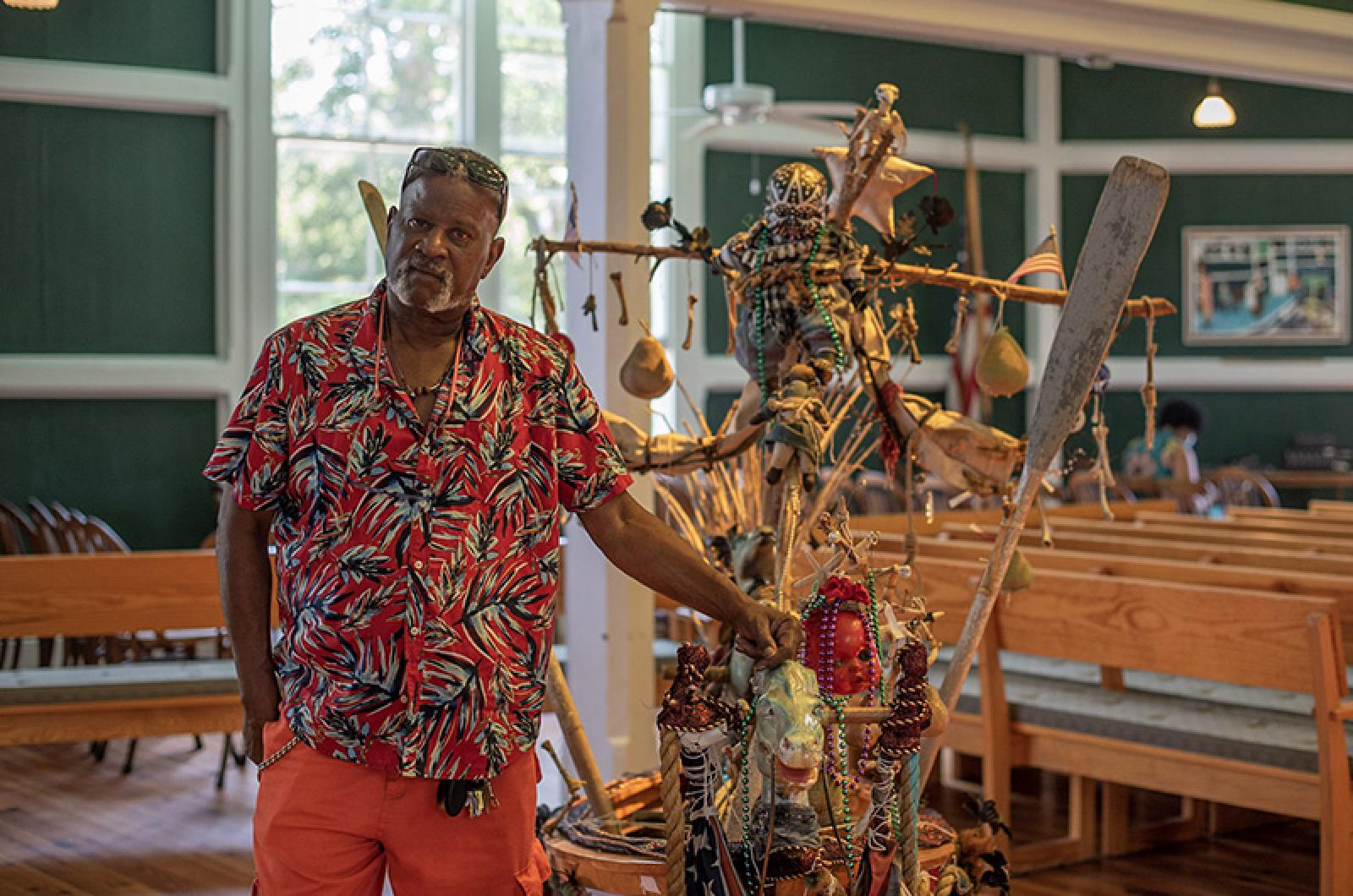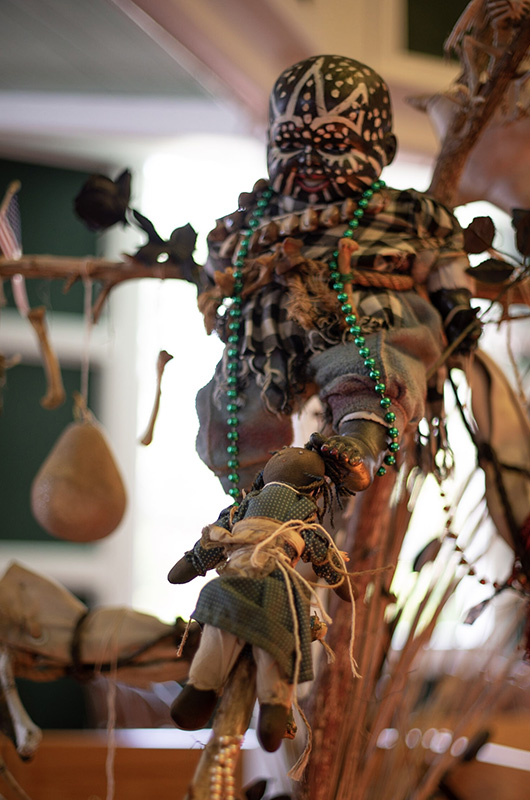Kneeling in the circular nave of Union Chapel, artist-in-residence Kevin Sampson worked on his latest community sculpture, drawing inspiration from African American folklore and the Black Lives Matter movement. The piece is an ornate assemblage built from the base of a small wooden boat that tells the story of racial justice, past and present.
The sculpture, constructed with the help of Mr. Sampson’s former student and documentary photographer Cesar Melgar, is part of a week-long community art project sponsored by the Vineyard Trust. Mr. Sampson, whose other assemblage sculptures are being showcased at the nearby Mariposa Museum for its Freedom Song summer exhibit, opened the chapel event up to the public last weekend, inviting visitors to enter the space as he worked.
Leaning over the piece, Mr. Sampson explained that the sculpture was inspired by the legend of the Flying Africans—an oral narrative about Igbo slaves who drowned themselves in the swamps of Georgia to avoid returning to slavery. But the story doesn’t end there, he said. According to myth’s retelling, the slaves did not drown, but instead grew wings and flew back to Africa.
Mr. Sampson’s sculpture uses the legend of the Flying Africans to comment on the current national moment.

“The Flying African will become a metaphor for the Black Lives Matter movement, powered by youth who can no longer accept the failings of a society they are to inherit,” he says in the project’s mission statement. “Like the Igbos in the legend, they will don wings and sail toward change.”
Standing just above eye-level, the sculpture is replete with striking objects and images. The base of the boat, gifted to the project by the museum, is dotted with figurines of different shapes and colors, and its masts are laden with beads.
“The piece and the materials kind of directs you where it’s going to go,” said Mr. Sampson, whose assemblage sculptures have been showcased at museums around the northeast, including the Mystic Seaport Museum.
“I don’t like decorative art,” he said. “Everything I do, I try to have some kind of theme that’s relevant.”
For this piece, Mr. Sampson asked community members to bring objects from around the Island that speak to the sculpture’s message of racial equality—from spiritual objects, to protest signs, to objects that evoke childhood memories. Throughout the week, Islanders brought in items by the box-full, said Mr. Sampson.
The Flying Africans sculpture is the most recent chapter in Mr. Sampson’s career as a civil rights sculptor. His work, political and community-oriented by nature, has been informed by his background as the son of a civil rights activist as well as his time working in the Newark police force as the first African American composite sketch artist.
“I’m a civil rights baby... I was marching on picket lines as soon as I could walk,” said Mr. Sampson, remembering the civil rights giants, like Shirley Chisholm and Malcolm X, that he met throughout his childhood. “I’m not marching anymore, I’m done and my feet hurt. So this is my way of being involved, of making a statement.”
As with all of Mr. Sampson’s work, community engagement was a driving force in his art. Mr. Sampson spent the days leading up to the sculpture’s assembly exploring the Island with his cousin getting a feel for the community.
When the time came to begin work, he opened his sessions up to the public, inviting visitors to ask questions and to provide input.
“Everything I do is based on my community,” he said. “Once you involve the community, it becomes a communal piece and people feel ownership to it. That’s better than having an outsider coming in.”
While the finished sculpture will be showcased at the Carnegie in Edgartown before heading to the Mariposa’s sister museum in Peterborough New Hampshire in October, for Mr. Sampson the real art lies in the process.
“I’m totally process orientated,” he explained. “While I’m working on it, it’s very important, but once it’s done, I don’t ever want to see it again.”
Stepping out for a cigarette onto the rainy front steps of Union Chapel on Friday, he reflected on his vision for the finished piece.
“The way it is now, nobody listens to anybody. I want to create a dialogue so that people actually talk about what’s going on. Not talk at each other, but actually talk about what’s going on,” he said. “Everyone [on all sides] thinks they’re right, but the truth is in the middle.”
The sculpture is on display at the Carnegie from now until early October.







Comments
Comment policy »